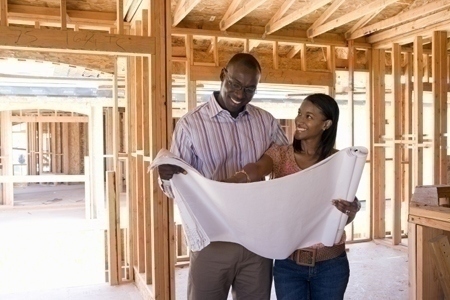 A growing economy, rising household formations, low mortgage rates and pent-up demand will help single-family housing production to rev up in 2015 while a growth in renters will keep the multifamily market at cruising altitude or higher, according to economists who participated in a recent National Association of Home Builders (NAHB) 2014 Fall Construction Forecast Webinar.
A growing economy, rising household formations, low mortgage rates and pent-up demand will help single-family housing production to rev up in 2015 while a growth in renters will keep the multifamily market at cruising altitude or higher, according to economists who participated in a recent National Association of Home Builders (NAHB) 2014 Fall Construction Forecast Webinar.
“Single-family builders are feeling good. They are not overly confident, but confident enough to keep moving forward,” says NAHB Chief Economist David Crowe.
He added that the single-family sector will finish out the year much stronger than it began and set the stage for a robust 2015.
“This is mostly due to significant pent-up demand and steady job and economic growth that will allow trade-up buyers who have delayed home purchases due to job insecurity to enter the marketplace,” says Crowe.
A Bright Outlook
NAHB is forecasting 991,000 total housing starts in 2014, up 6.6 percent from 930,000 units last year.
Single-family production is expected to rise 2.5 percent this year to 637,000 units, increase an additional 26 percent next year to 802,000 and reach 1.1 million in 2016.
Setting the 2000-2003 period as a benchmark for normal housing activity when single-family production averaged 1.3 million units annually, single-family starts are expected to steadily rise from 48 percent of what is considered a typical market in the third quarter of 2014 to 90 percent of normal by the fourth quarter of 2016.
Multifamily starts, which Crowe says are now at a normal level of production, are projected to increase 15 percent in 2014 to 356,000 units and hold steady next year.
Meanwhile, the NAHB Remodeling Market Index, which averages ratings of current remodeling activity with indicators of future activity, matched its all-time high of 57 in the third quarter of 2014 and has been above 50 for six consecutive quarters. A reading above 50 indicates that more remodelers report market activity is higher (compared to the prior quarter) than report it is lower.
NAHB is forecasting that residential remodeling will post a 3.4 percent decline in 2014 over last year, due in large part to slow activity in the first quarter caused by an unusually harsh winter throughout much of the nation. Residential remodeling activity is expected to rise 2.7 percent in 2015 and an additional 1.3 percent in 2016.
Housing Will Soon Be Undersupplied
Taking an even more bullish outlook, Mark Zandi, chief economist at Moody’s Analytics, says that prospects are good for continued gains in overall economic and housing activity.
“The reason is that job growth is quite strong,” says Zandi. “Currently, we are creating about 225,000 jobs per month, or 2.75 million per year. That is double the pace necessary to reduce unemployment and under employment, which augers very, very well for housing demand and the housing market more broadly.”
With the current supply of housing running just over 1 million units on annualized basis, Zandi says that this figure is well below what is needed for the longer run.
In the aftermath of the Great Recession, new household formations were depressed as the number of Millennials living with their parents or doubling or tripling up in apartments soared to about 3 to 4 million above normal, according to Zandi. As the economy continues to improve and these 18-to-34 year-olds begin to form their own households, this will boost overall demand for new housing construction.
“In a normal year, there should be demand for 1.7 million units,” he says, adding that each single-family home generates about 3.5 jobs over the course of a year and every multifamily unit produces 1.5 jobs over the same period.











